By Eric Vandenbroeck and co-workers
Following our comprehensive
introductory discussion, we will proceed with six articles, including a
history of the Order of Malta. And since there is an overlap between
self-invented orders of St. John, this usually also involves mimic Bishops. We
will, among others, cover this in part one.
The Strange World Of The Mimic Orders Of St. John And
Its Mimic Bishops
The top photo is the Order of St
John_ Russian Tradition Investiture Service in London. Here the often referred to Michael Foster
introduced Bishop Howard Weston-Smart as
Chaplain to the Order of St John_ Russian Tradition.
One should add that
the Joseph-René Vilatte line also linked independent Catholicism
to Western Esotericism. And when Jean-Baptiste Bricaud
(also known as Tau Jean II) was made a Bishop, Vilatte’s esoteric
bequest went worldwide. Bricaud managed to
gather five significant groups of esotericists,
including the Ordo Templi Orientis of Theodor Reuss
and the neo-Gnosticism of Jules Doinel, who founded l’Église gnostique to revive
Catharism.
Many Western esoterics continued to trace their heritage to the Bricaud nexus, partly because of the status conferred by
succession from Vilatte.4 Even today, the Ordo Templi
Orientis considers apostolic succession a “valued part of the group’s
history.”2 About Ruess, see also Steiner, who created his own Church called the
Christian Comunity.
And as the San-Luigi comments continue, there
would be a continuation of elements of the work of the Eglise
Gnostique Universelle
through the churches led by Robert Ambelain and his
successors; this would essentially be a work of revival and rebirth that
continues in many Gnostic churches of today, perhaps illustrating that its
inner traditions and their spiritual teachings are capable of creating their
organizational frameworks through the transmission of initiatic
and episcopal successions.
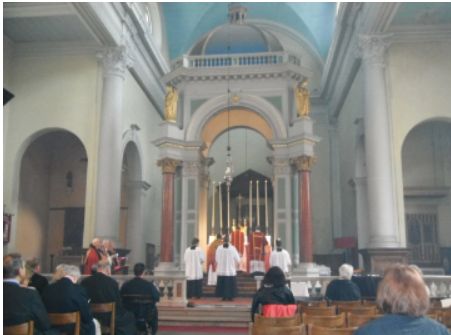
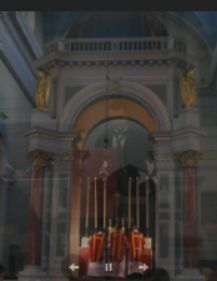
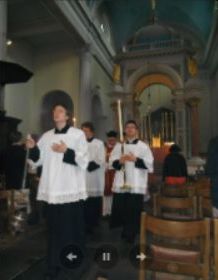
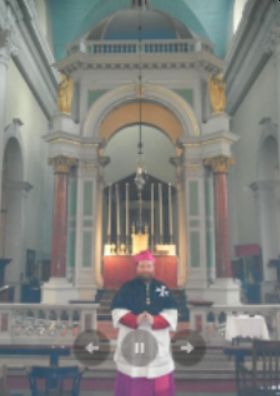
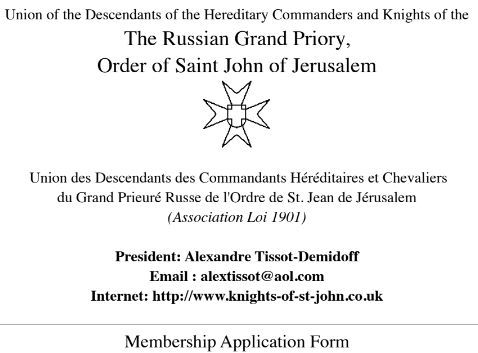
Later in 2009, the Order changed his name to:

Again using a different name, the
following document dates from 8 May 2010:
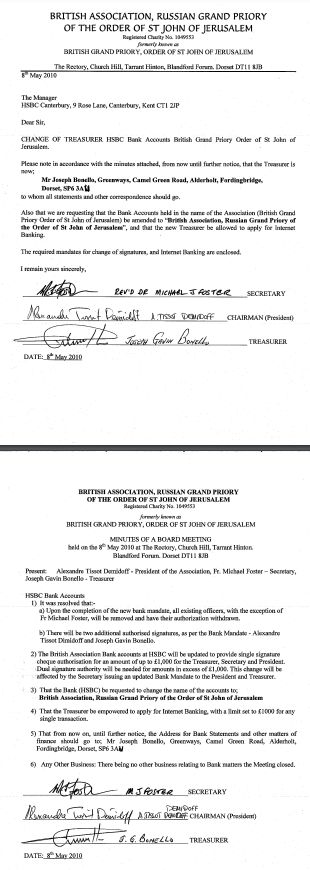
Then when on 19 May
of the same month a Hong Kohn Chapter, was created the name of the Order
changed to:
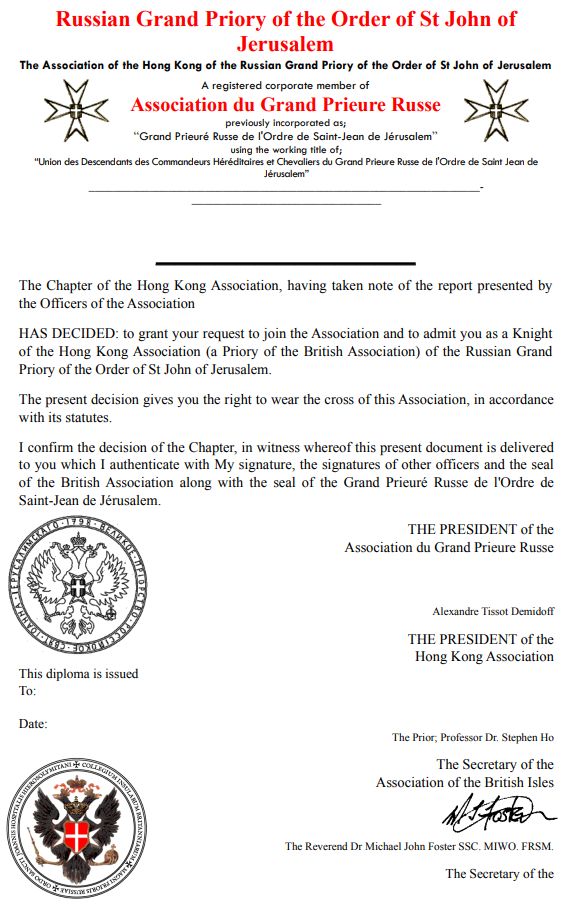
Tau Synesius consecrated the twenty-one-year-old Joanny Bricaud as a bishop of the Gnostic Church in 1901. Papus, who
wanted to see a more directly Martinist and Roman
Catholic-modelled body than the more general esotericism of Tau Synesius, encouraged Bricaud to
found his church as a schism of the Gnostic Church, which he did in 1907,
adopting the name Gnostic Catholic Church and the title of Tau Jean II. In
February 1908, the Episcopal Synod of the Gnostic Catholic Church elected Bricaud as its Patriarch, which event marked the point at
which Bricaud’s jurisdiction, subsequently known as
the Eglise Gnostique Universelle, became acknowledged as the successor
jurisdiction to the Gnostic Church of Doinel, the
Carmelite Church of Vintras and the Johannite Church.
Papus conditionally consecrated Bricaud
in 1911, from which date the Eglise Gnostique Universelle was
considered the official church of Martinism.
Eventually, in 1926, the remnant of Tau Synesius’
church also chose to unite with Bricaud’s Eglise Gnostique Universelle. 3
Bricaud:
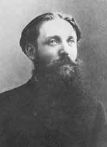
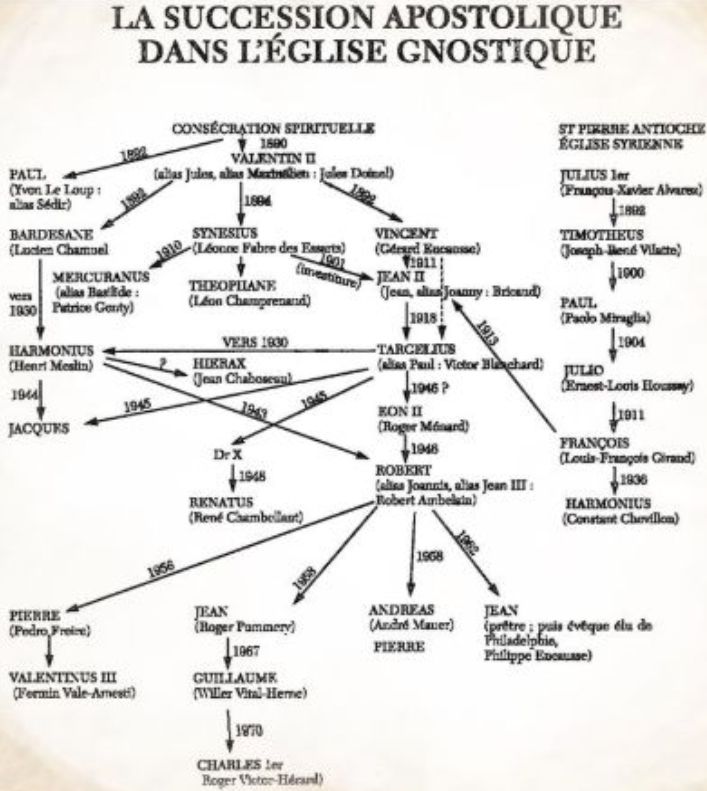
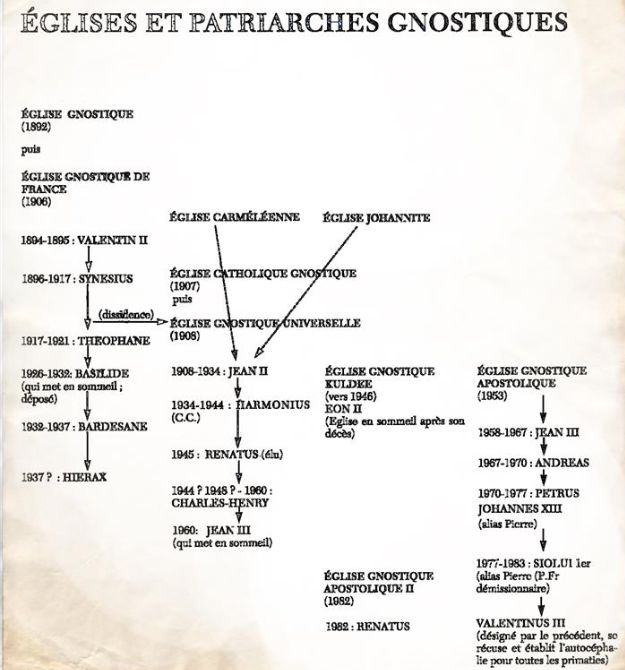
The first to create
the Cathar myth was Napoléon Peyrat,
a bourgeois and talented fabulist who concocted in the 1870s an account of the
Cathars, which, though primarily made up, still passes as truth in esoteric
circles like Rudolf Steiner's
Anthroposophy today.
Doinel’s consecrations merged with Vilatte’s
line when Doinel joined Bricaud.
Many Western esoterics continues to trace their
heritage to the Bricaud nexus, partly because of the
status conferred by succession
from Vilatte.
And while the
above-mentioned British Association was not, some other Orders can be of
more questionable
repute, or are (of
which there is a fairly large number that is as to mention one) selling fake diplomatic passports or of a borderline
criminal type.
We already mentioned
the Duval Brimeyer development. Another worthy of
mentioning is the MIDA scam of MGR Gerard Berrier, also naming
himself Gerard Berger de Martigue.

Gerard Berrier was
able to employ a large following which included a General and other officials
who were entrapped:

The MIDA presented
itself under several usurped names as "The Commandery of Africa of the
Military and Hospitaller Order of Saint John" and the "Apostolic
Order of Saint John."
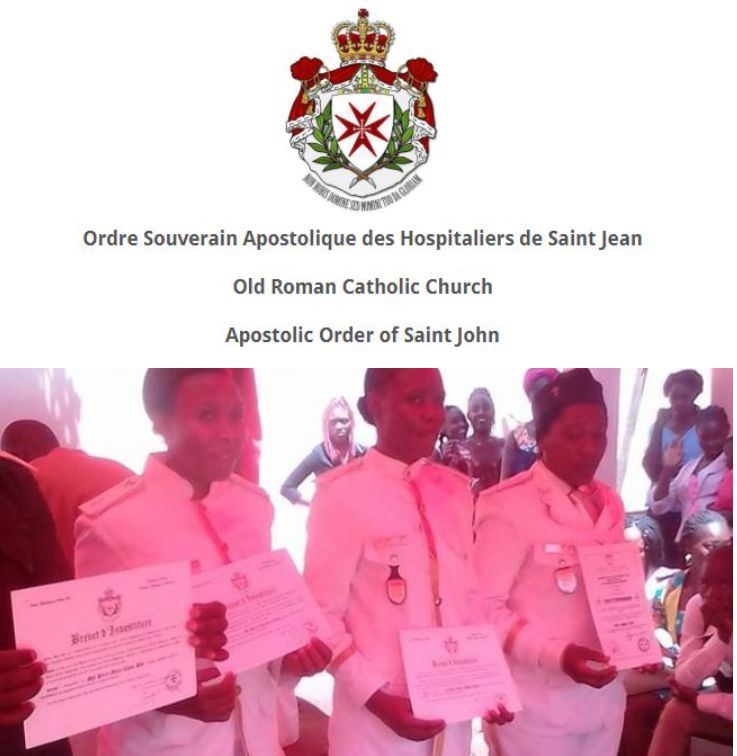
In April/Mai of 2019,
the scheme started to fall apart. On 17 April 2019, the prefect of Mfoundi decided to suspend the organization's
activities, which was a Ponzi scheme. A form of fraud that lures
investors and pays profits to earlier investors with funds from more recent
investors. Hence the administrative authority considered it a
"swindle" and favored the "corruption of youth."
And on September 13, 2019, the Mfoundi High
Court charged MIDA with "fraud and money laundering of a sum estimated at
12.3 billion CFA francs between 2016 and 2018.”

The organization's
leaders, at the time in prison, did not stop being active. From their place of
detention, those at the origin of the case continue to manipulate the
subscribers through various maneuvers”, reported the daily Le Jour in its
edition on newsstands on 15 May 2019.
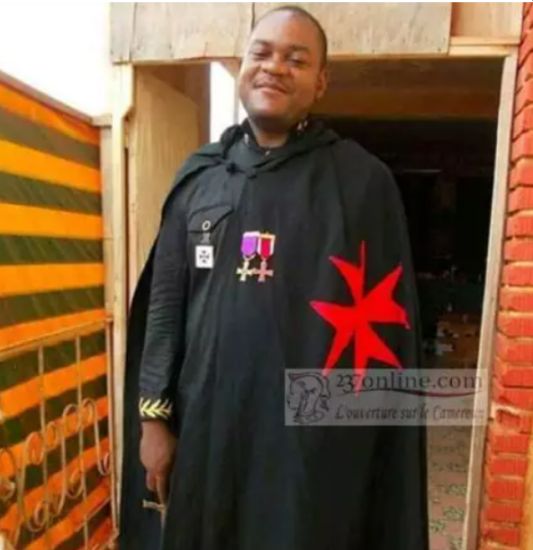
The habeas corpus
appeal filed by the lawyers for the defendants was rejected on Thursday, May
24, 2018, by the investigating judge of the High Court of the Mfoundi administrative center.
The decision was made
after almost 3 hours of debate. This is where hundreds of subscribers to the
activities of Mida massed since the morning outside the courthouse and
repressed by the public security forces are disappointed by the judge's
sentence and express their anger at the end of the hearing.
Training
at MIDA:

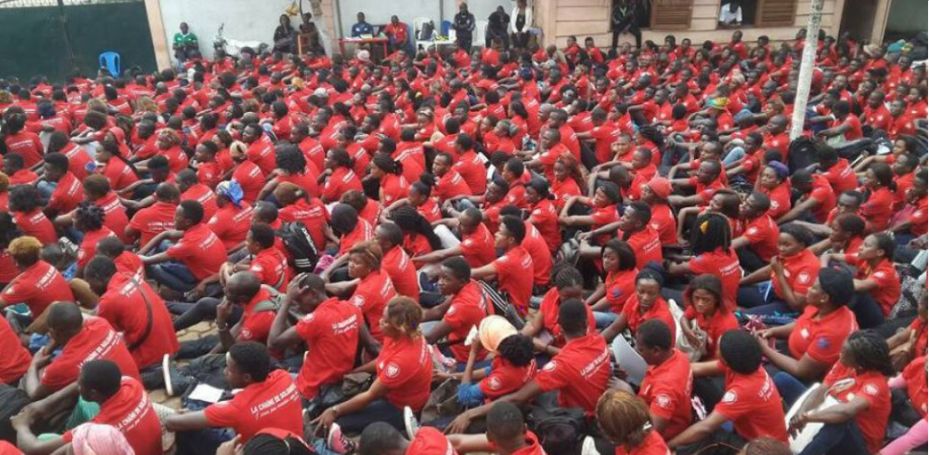
Most significantly, the Berrier's Apostolic
Order of Saint John obtained territories and sovereignty for his FÉDÉRATION DES DEUX RIVES.
In
France, Berrier used the money he made through his Cameroon scam to
present himself as what was expected to appeal to the French public.
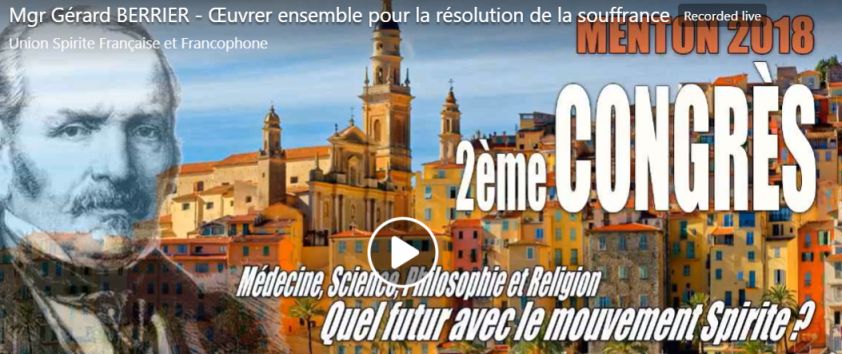
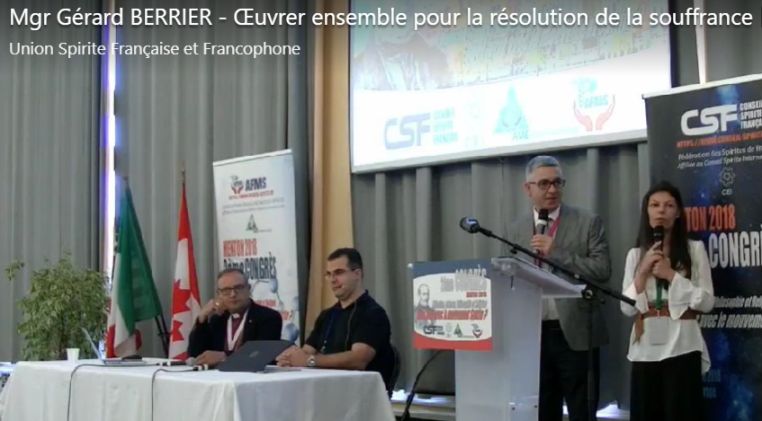
Also, recently in
2023, Berrier, pictured on the table above, is still selling his claimed TELEPATHIC
EXPERIENCES, communication beyond the senses.
To conclude, a 'real'
bishop is not a successor of a sole apostle as only the synod/college of
bishops in toto are heir to the college of the apostles. Therefore none of the
mimic bishops has a ’real’ apostolic succession. There is no Holy Ghost in
mimic-Bishop-consecrations. The instrumental con is of no apostolic value.
Most
mimic Bishops and mimic orders dish
out papers and diplomas with no value.
The alleged 'Bishop'
Gerard Berrier, who more recently called himself Gérard de Martigues, is listed here, but
it's not legitimate. Also, the Sovereign Apostolic Order of the Knights and
Hospitallers of Saint John listed on the same site is
not legitimate either. None of the self-invented Orders, however, will use the
actual name of the Order because they know the real name is
copyright is protected.
1. Joanne
Pearson, Wicca and the Christian Heritage: Ritual, Sex and Magic, pp.
45–47. Apiryon (Tau Apiryon),
“History of the Gnostic Catholic Church,” Ordo Templi
Orientis, 1995.
2. Augustine, In epistulam Ioannis ad Parthos
(Tractatus VII, 8) (c. 416 CE), in Augustine, Homilies on the First Epistle of
John, trans. Boniface Ramsey, Works of Saint Augustine series (Hyde Park, N.Y.:
New City Press, 2008), pp. 104–14. Pearson, Wicca and the Christian Heritage,
p. 47.
3. See James Ingall
Wedgwood, Beginnings of the Liberal Catholic Church, February 13, 1916 (1937;
Lakewood, N.J.: Ubique, 1966); Peter Anson, Bishops at Large (1964; Berkeley: Apocryphile Press, 2006), pp. 185–87, 192–98, 323–442;
Robert Ellwood and Harry B. Partin, Religious and Spiritual Groups in Modern
America, 2nd ed. (Englewood Cliffs, N.J.: Prentice Hall, 1988), pp. 107–9;
and Siobhan Houston, Priests, Gnostics and Magicians: European Roots of
Esoteric Independent Catholicism (Berkeley: Apocryphile
Press, 2009), pp. 67–120.
4. Reference above is
to the organization led by Besant based in Adyar. The number of members in the
Theosophical Society at its height is usually given as forty-five thousand, for
example, in Anne Tyler, Annie Besant: A Biography (Oxford: Oxford University
Press, 1992), p. 328. Catherine Albanese, A Republic of Mind and Spirit (New
Haven: Yale University Press, 2007), chap. 6, “Metaphysical Asia,” pp. 330–93.
Besides the Liberal Catholic Church, other esoteric sacramental groups started
by former Theosophists include Rudolf Steiner’s Christian Community, Dion
Fortune’s Guild of the Master Jesus (later called the Church of the Graal), and
Richard, Duc de Palatine’s Pre-Nicene Gnostic Catholic Church.
For updates click hompage here